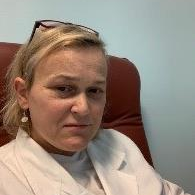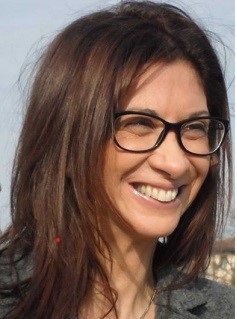Studying at the University of Verona
Here you can find information on the organisational aspects of the Programme, lecture timetables, learning activities and useful contact details for your time at the University, from enrolment to graduation.
Academic calendar
The academic calendar shows the deadlines and scheduled events that are relevant to students, teaching and technical-administrative staff of the University. Public holidays and University closures are also indicated. The academic year normally begins on 1 October each year and ends on 30 September of the following year.
Course calendar
The Academic Calendar sets out the degree programme lecture and exam timetables, as well as the relevant university closure dates..
| Period | From | To |
|---|---|---|
| 1° e 2° semestre (corsi annuali) PROFESSIONI SANITARIE | Oct 3, 2022 | Sep 30, 2023 |
| 1 SEMESTRE PROFESSIONI SANITARIE | Oct 3, 2022 | Dec 23, 2022 |
| 2 SEMESTRE PROFESSIONI SANITARIE | Jan 9, 2023 | Sep 30, 2023 |
Exam calendar
Exam dates and rounds are managed by the relevant Medicine Teaching and Student Services Unit.
To view all the exam sessions available, please use the Exam dashboard on ESSE3.
If you forgot your login details or have problems logging in, please contact the relevant IT HelpDesk, or check the login details recovery web page.
Should you have any doubts or questions, please check the Enrollment FAQs
Academic staff
 stefania.battisti@univr.it
stefania.battisti@univr.it
 borghesi.a@mail.apss.tn.it
borghesi.a@mail.apss.tn.it
 chiara.cristofolini@univr.it
chiara.cristofolini@univr.it
 massimo.dibenedetto@univr.it
massimo.dibenedetto@univr.it
 maurizio.grigiante@unitn.it
maurizio.grigiante@unitn.it
 daniele.longo@apss.tn.it
daniele.longo@apss.tn.it
 rocco.micciolo@economia.unitn.it
rocco.micciolo@economia.unitn.it
 francesco.torre@apss.tn.it
francesco.torre@apss.tn.it
 3455941159
3455941159
Study Plan
The Study Plan includes all modules, teaching and learning activities that each student will need to undertake during their time at the University.
Please select your Study Plan based on your enrollment year.
1° Year
| Modules | Credits | TAF | SSD |
|---|
2° Year activated in the A.Y. 2023/2024
| Modules | Credits | TAF | SSD |
|---|
3° Year It will be activated in the A.Y. 2024/2025
| Modules | Credits | TAF | SSD |
|---|
| Modules | Credits | TAF | SSD |
|---|
| Modules | Credits | TAF | SSD |
|---|
| Modules | Credits | TAF | SSD |
|---|
Legend | Type of training activity (TTA)
TAF (Type of Educational Activity) All courses and activities are classified into different types of educational activities, indicated by a letter.
Chemical-Physical Sciences - CHIMICA GENERALE E INORGANICA (2022/2023)
Teaching code
4S000462
Teacher
Credits
2
Language
Italian
Scientific Disciplinary Sector (SSD)
CHIM/03 - GENERAL AND INORGANIC CHEMISTRY
Period
1 SEMESTRE PROFESSIONI SANITARIE dal Oct 3, 2022 al Dec 23, 2022.
To show the organization of the course that includes this module, follow this link: Course organization
Learning objectives
Aim of the course
The Chemistry course provides the basic concepts of inorganic chemistry in preparation for the subsequent organic chemistry study. The main aims of the course are to:
• develop, in the students, the proper chemical knowledge and property of language suitable to handle chemical problems with a scientific approach;
• provide a description of the structure of atoms, of the chemical bonds and of the molecules that lead to the formation of inorganic compounds and that explain their physical-chemical properties;
• illustrate the interactions between atoms and between molecules, to comprehend the different aggregation states of the matter;
• provide a description of the transformation of matter through the chemical reactions;
• develop the capacity to carry out chemical calculations relative to mass balance.
At the end of the course, the student will be able to:
• describe the elementary particle structure of atoms, isotopes and their ions;
• describe the electronic configurations of the various elements, to predict their main periodic properties and their chemical reactivity;
• understand and justify atomic bonding in inorganic compounds by means of the valence-bond theory;
• comprehend the interatomic and intermolecular interactions to understand the various aggregation states of the matter;
• describe the behaviour of the ideal gas phase;
• describe the chemical solutions, the main concentration units.
Requirements
The basic knowledge concerning the numerical, algebra and analytical geometry calculations are required, such as typically given in the high school.
Learning and teaching mode.
The course is organized in 20 hours of frontal lessons in which syllabus arguments are presented on the blackboard. Besides the theoretical aspects, step by step, representative examples and exercises will be shown in order to practice.
Specific didactical material will be furnished to the students at the end of each paragraph. The regular attendance of the lessons is recommended for an easier learning.
Program
1. Basic and derived quantities: measurement untis, multiples and submultiples. Significant digits of a measurement and os a mathematical result. Rounding rules.
2. Structure of matter; sub-atomic particles. Atoms: nucleus and electrons. Atoms: atomic number Z and mass number A. Isotopes and their relative abundacy. Elements: atomic wieght and element weight. Molecules: molecular and minimum formulae. Molecular weight. Chemical reactions: definition of mole: molar weight. Stochiometry and reaction balance: stoichiometric coefficients, limiting reactant, reaction yield.
3. Atomic structure. Radiation - matter interactions: atomic absorption and emission. Motion of an electron around a nucleus: atomic orbitals and quantum numbers. Orbital structures. Electronic configurations of polyelectronic atoms. Periodic table of elements and periodic properties.
4. Chemical bond: valence of an atom and electronegativity of elements. Ionic bonds. Covalent bonds: Lewis'assumptions, electronic doublet sharing and orbitalic overlapping. Lewis' molecular structures. Electronic promotion and hybrid orbitals. Delocalized bonds. Intermolecular weak interactions.
5. Nomenclature of inorganic compounds. Oxydation number of an atom in a molecule. Classification of inorganic compounds. Oxydation numbers and oxyreductive balance.
6. States of matter. Phase changes. State equation; dynamic equilibrium states. Ideal gas law; real gases and liquefaction. Solid and liquid features. State diagram of a pure substance: vapour pressure of a condensed phase. Ideal solutions and their colligative properties.
7. Chemical equilibria in ideal solutions: solubility processes, acid-base and oxyreductive equilibria.
Didactic methods
The course is based on lectures and classroom exercises. All lecture notes and slides, comprehensive homeworks, together with self-evaluation tests and final tests are available for all the students. If some constraints will be active, due to pandemic events, the course will be held on zoom platform.
Learning assessment procedures
One hour- long written test on topics exposed during the course. Numeric calculation exercises, open questions on theoretical topics, multiple choice tests.
Evaluation criteria
The final mark, from the written test, will consider the capability of the student in concisely describing theoretical chemical topics, together with the capability in understanding and solving numeric calcilations. The final mark the evaluation will be expressed in a thirtieth scale.
Exam language
Italiano
Career prospects
Module/Programme news
News for students
There you will find information, resources and services useful during your time at the University (Student’s exam record, your study plan on ESSE3, Distance Learning courses, university email account, office forms, administrative procedures, etc.). You can log into MyUnivr with your GIA login details: only in this way will you be able to receive notification of all the notices from your teachers and your secretariat via email and soon also via the Univr app.
Graduation
Documents
| Title | Info File |
|---|---|
|
|
pdf, it, 142 KB, 14/04/23 |
Gestione carriere
Orario Lezioni
Documents
| Title | Info File |
|---|---|
|
|
pdf, it, 509 KB, 11/04/24 |
|
|
pdf, it, 499 KB, 11/04/24 |
|
|
pdf, it, 621 KB, 11/04/24 |
|
|
pdf, it, 1453 KB, 07/02/24 |












